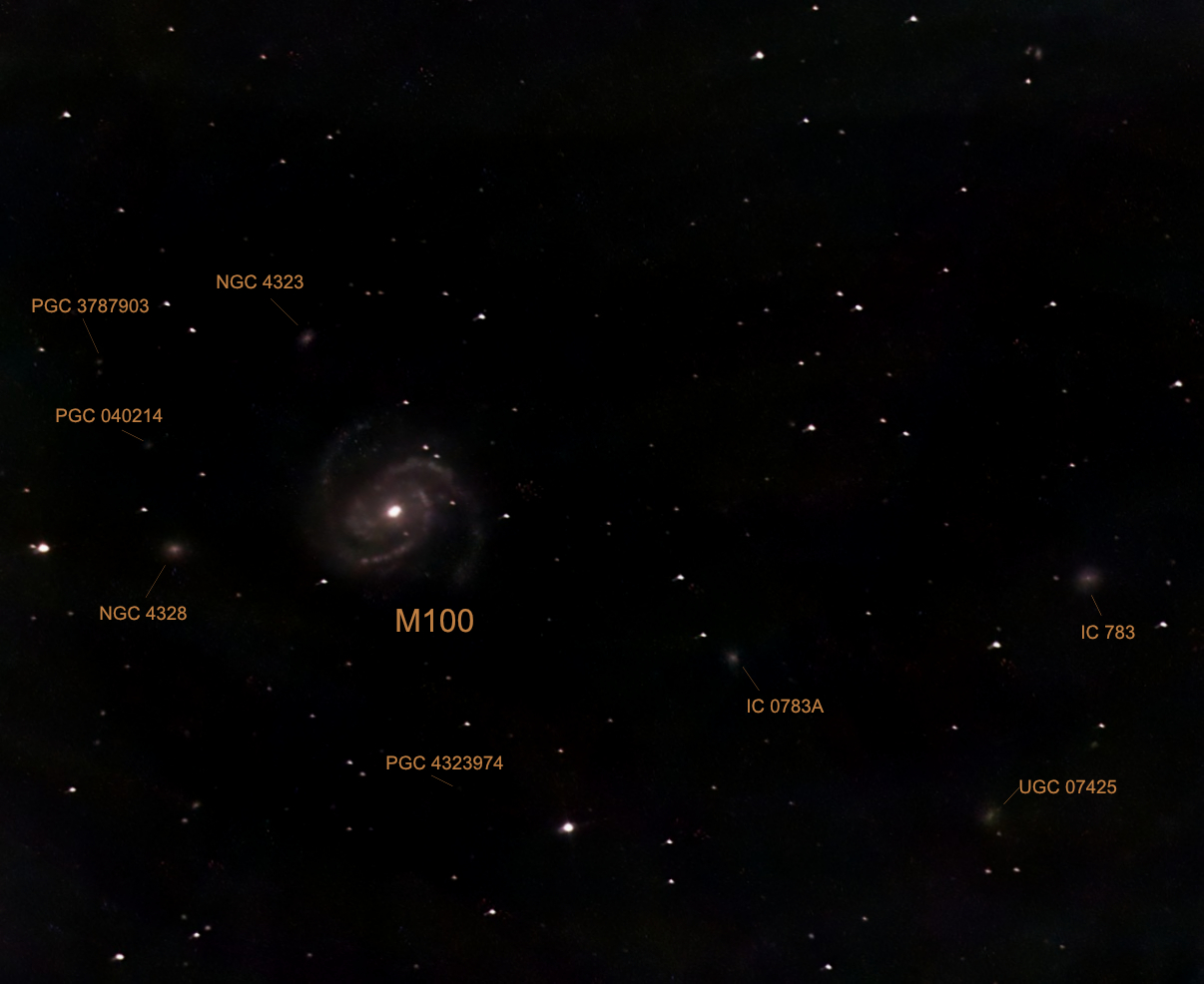M100
Blowdryer Galaxy in Coma Berenices

10.1” f/4.5 Mallincam DS432cTEC
Exposures = 10-20 sec, Live-stacked frames = 50-40 (90 total), Gain = 15 of 250
Also known as the Mirror of M99, M100 is an intermediate spiral galaxy located about 55 million light years away. One of the largest galaxies in the Virgo Super Cluster, M100 is thought to be slightly larger than the Milky Way; in this image, it appears about 5 arc minutes across. There are two main spiral arms gently wrapping themselves loosely around the core, with what appears to be “split-end” fainter hints of arms next to them. Burnham’s describes bright nebulous regions ornamenting the spiral arms like pearls on a string; this effect appears especially in the southern arm. A couple of colours are apparent, a predominantly reddish colour along with blue-grey tinges in spots along the arms and nearer the core, vaguely resembling the colours seen in this image Hubble provides.
There are a number of other smaller galaxies appearing in the field of view, including a couple of M100 satellite galaxies, NGC 4328 and NGC 4323, lying at 9 and 11 o’clock respectively. How many smaller galaxies in total can you find?
North at 12 o’clock, East at 9 o’clock.
M100 annotated field of view

Various other galaxies appearing in the FOV with M100, all are 1 arc minute across or smaller. Most appear to be in the magnitude 14 and 15 range, with a few even dimmer, like PGC 3787903 which according to Carte du Ciel’s PGC HyperLeda database is magnitude 17.54. I believe I’ve spotted an even dimmer galaxy, PGC 4323974, clocking in at magnitude 19.08 and size 0.2 x 0.1 arc minutes! Although admittedly this is so faint it could amount to being just a noise burp on the sensors in the right location.